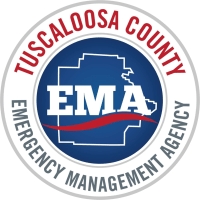
Protecting homes and businesses from disasters can be difficult. Below are some steps you can take to help mitigate those disasters.
HOMES
It is important to protect you and your loved ones before a disaster occurs. Below are a few extra steps you can take to help you prepare for severe weather:
Reinforcing Garage Door A garage door is the largest potential breach point of a structure. Winds entering through a failed garage door can blow out doors, windows, walls, and the roof of the garage. If the garage is attached to a home or other structure, the winds entering the garage can also cause structural damage to the rest of the building. Reinforcing a garage door with metal bars and brackets helps protect the garage and its content, as well as, the entire structure, by increasing its performance against high winds. The metal thickness (gauge) of the door, the number and strength of mounting brackets and connectors holding the track to the wall and the ceiling, and the strength of the horizontal reinforcements on the door all work together to make a door stronger.
Installing and Maintaining Proper Anchors In most manufactured homes, anchorage is provided by ground anchors and steel straps. Ground anchors are designed to move slightly when loads are applied. In fact, they derive much of their resistance to wind loads through this movement. To be effective, the correct ground anchors for the soil type must be selected. Then once installed, the straps should be inspected regularly, and all corroded or substandard straps or anchors removed and replaced.
Building a Conventional Foundation Conventional foundations, such as those on site-built homes, perform better than ground anchors during high-wind events. Foundations similar to those used for site-built homes can support manufactured homes. These foundations require less maintenance than ground anchor foundations.
Anchoring Outbuildings Anchoring storage sheds and other outbuildings helps prevent them from becoming flying debris. Anchor straps similar to those used in manufactured homes can be used to anchor these buildings.
For a guide on ways to protect your home from flooding click FEMA's: Homeowner’s Guide to Retrofitting
BUSINESSES
It is essential that you prepare and maintain a complete inventory of all of your physical assets. Your list should include at least, your buildings, fixtures, vehicles, equipment and inventory. There are various forms of mitigation that you can employ to minimize your vulnerability. Among them are:
Note:
- If you are renting, you and your landlord need to have a clear understanding of each others' responsibilities regarding assets.
- Make sure your emergency and security plans include all of the preparations that must be made before a disaster and make sure your the plans incorporates upgrades done to your facility or office.
- Make sure that personnel are designated, qualified, and kept updated to supervise and perform a complete facility or operations shutdown after improvements.
Hardening structures to be more damage resistant is a type of structural mitigation. Among the types of mitigation you can employ to protect your property are:
- Roof improvements
- Structural Reinforcements
- Tie-downs for Roof Mounted Air Conditioners
- Shutters/Break Resistant Glass
- Garage Door Braces
- Improve or Clean Out Drainage systems
- Exterior improvements
- Protection of facilities, grounds, equipment, vehicles and inventory is important to restoring operations as quickly as possible after a hurricane.
The decision as to when to start steps will be determined by the size and complexity of your facilities. If you rent your facilities, it may well be that the landlord will determine if certain upgrades or changes should done. You should have a clear understanding with your landlord or property manager regarding his plans and expectations. You should also refer to the Timeline for Decisions/Actions element for further information.
If your business has Hazardous materials that could be flammable, combustible, explosive, toxic, noxious-corrosive, oxidizable, radioactive or irritating they should report it to the Tuscaloosa County Local Emergency Planning Committee (LEPC) . Detailed lists of hazardous materials may be obtained from the Environmental Protection Agency and/or the Occupational Safety and Health Administration. It is important that you be familiar with the hazmat items stored at your facilities and take every precaution to secure them before a disaster occurs.
HOMES and BUSINESSES
Homes and Business can mitigate the impact of disasters by these following steps:
Strengthen Doors and Windows Installing reinforced bolt kits can be used at the top and bottom of doors. Windows can be strengthened by installing storm shutters or impact-resistant glass. Impact-resistant glass is laminated with a thin film to keep the glass from shattering. It is also sealed to its frame with structural adhesive.
Anchoring Heating Oil or Propane Tanks Unanchored heating oil or propane tanks can be easily moved by flood waters. Losing these tanks results in major costs and inconvenience to their owners. If dislodged, these tanks also pose serious threats to public safety and to the environment. An outside tank can be secured by running straps over it and attaching the straps to ground anchors.
Hurricane Straps These straps (made out of galvanized metal) help keep the roof fastened to the walls in high winds. These straps are often difficult to install, so you may need a contractor for this project.
Tree Maintenance Cut down or trim trees that may have become damaged, died, or could cause damage during a high wind event. This could help keep you from having damage to your building, car, and staff, clients, or family.
Click Here for more information on protecting your property from high winds.
For a guide on making your building's utility systems flood resistant click FEMA's: Protecting Building Utility Systems From Flood Damage
